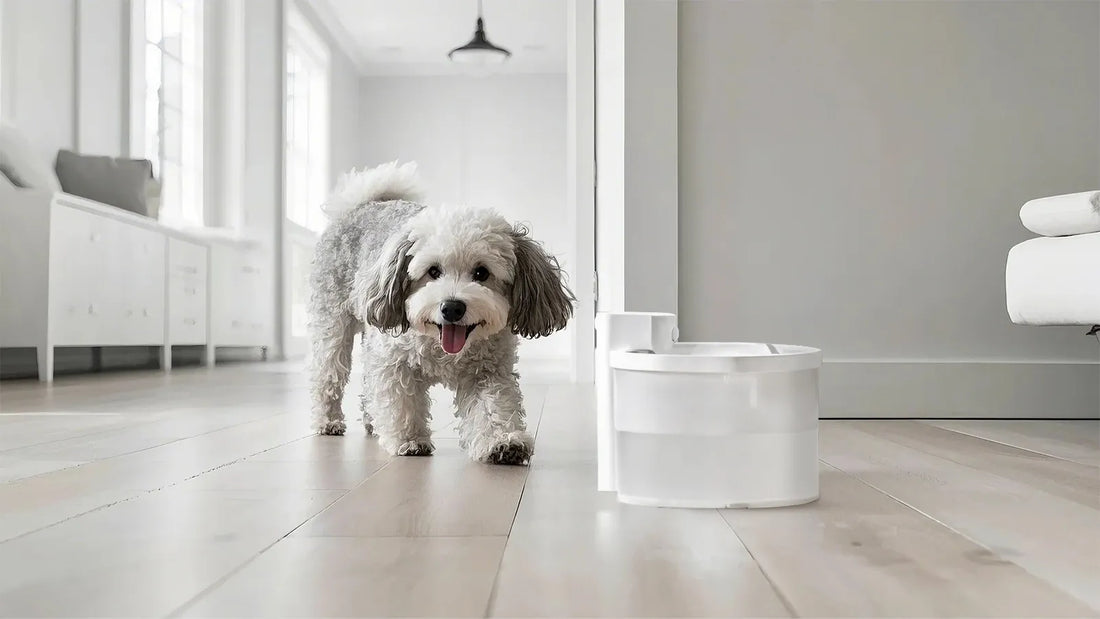If you've ever watched your dog devour their meal in seconds, you know how concerning it can be. Fast eating in dogs can lead to a host of health issues, from bloating to choking. Fortunately, a dog bowl to prevent fast eating can be a game-changer for your furry friend. In this article, we'll explore the benefits of these specialized bowls, the different types available, and how to choose the best one for your pet.
Why Fast Eating is a Problem for Dogs
Fast eating is more than just a bad habit; it can have serious consequences for your dog's health. When dogs eat too quickly, they tend to swallow large amounts of air along with their food. This can lead to bloating, a condition where the stomach fills with gas and twists on itself. Bloating is a medical emergency that requires immediate veterinary attention. Additionally, fast eating can cause choking, vomiting, and even obesity due to overeating.
Benefits of a Dog Bowl to Prevent Fast Eating
A dog bowl designed to slow down eating can offer numerous benefits. First and foremost, it helps regulate your dog's eating pace, reducing the risk of bloating and choking. These bowls often feature obstacles or ridges that force your dog to eat around them, making it impossible to gulp down food quickly. Slower eating also promotes better digestion and nutrient absorption, leading to overall improved health. Furthermore, these bowls can help manage portion control, which is crucial for maintaining a healthy weight.
Types of Dog Bowls to Prevent Fast Eating
There are several types of dog bowls available that can help slow down your pet's eating. One popular option is the maze bowl, which features a series of ridges or walls that create a maze-like pattern. Your dog has to navigate around these obstacles to access their food, effectively slowing down their eating pace. Another option is the puzzle bowl, which requires your dog to solve a simple puzzle to access their food. These bowls not only slow down eating but also provide mental stimulation. Lastly, there are portion control bowls that divide the food into smaller sections, forcing your dog to eat more slowly.
How to Choose the Right Dog Bowl to Prevent Fast Eating
When selecting a dog bowl to prevent fast eating, there are several factors to consider. First, consider the size of your dog. Larger dogs may require a bigger bowl with more substantial obstacles, while smaller dogs may do well with a simpler design. Material is another important factor; look for bowls made from durable, non-toxic materials that are easy to clean. Additionally, consider your dog's eating habits. If your dog is particularly determined to eat quickly, you may need a more complex bowl with multiple obstacles. Finally, think about ease of use and cleaning; a bowl that's difficult to clean may not be practical for everyday use.
Tips for Transitioning Your Dog to a Slow-Eating Bowl
Transitioning your dog to a slow-eating bowl may take some time and patience. Start by introducing the new bowl alongside their regular bowl, allowing them to get used to the new object. Gradually increase the amount of food in the slow-eating bowl while decreasing the amount in the regular bowl. Be patient and give your dog time to adjust to the new eating pace. You can also use positive reinforcement, such as treats and praise, to encourage your dog to use the new bowl. Remember, the goal is to make mealtime a positive and stress-free experience for your pet.
Common Mistakes to Avoid
When using a dog bowl to prevent fast eating, there are a few common mistakes to avoid. One mistake is choosing a bowl that's too complex for your dog's needs. While a more intricate design may slow down eating, it could also frustrate your dog and make mealtime stressful. Another mistake is not cleaning the bowl regularly. Food particles can get trapped in the obstacles, leading to bacterial growth and unpleasant odors. Lastly, avoid using the bowl as a punishment; it should be a positive addition to your dog's routine, not a source of anxiety.
Additional Tips for Managing Fast Eating in Dogs
While a slow-eating bowl can be highly effective, there are other strategies you can use to manage fast eating in dogs. One approach is to divide your dog's meals into smaller, more frequent portions throughout the day. This can help prevent overeating and reduce the risk of bloating. Another tip is to use food-dispensing toys that require your dog to work for their food, slowing down their eating pace. Additionally, consider the type of food you're feeding your dog; wet food or larger kibble can take longer to eat than small, dry kibble. Finally, always ensure your dog has access to fresh water, especially during and after meals.
Investing in a dog bowl to prevent fast eating is one of the best decisions you can make for your pet's health and well-being. Not only does it reduce the risk of serious health issues, but it also promotes better digestion and portion control. With the right bowl and a little patience, you can transform mealtime into a positive and enjoyable experience for your furry friend. So why wait? Start exploring your options today and give your dog the gift of healthier eating habits.













